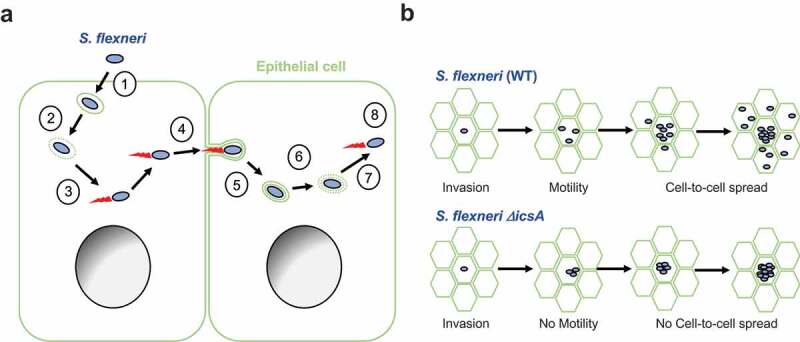Figure 1.

The Cell Biology of S. flexneri. (a) (1) S. flexneri (blue) utilizes its T3SS to trigger its own uptake into epithelial cells (green). (2) S. flexneri escapes primary vacuoles and gains access to the cytosol. (3) S. flexneri hijacks cytoskeleton components and displays actin-based motility. (4) At cell-cell contacts, motile S. flexneri forms membrane protrusions that (5) resolve into secondary (double-membrane) vacuoles. (6) S. flexneri escapes secondary vacuoles and (7) gains access to the cytosol of adjacent cells, where (8) it resumes actin-based motility. (b) Top. Wild type S. flexneri (WT) invades epithelial cells, grows and divides. Concurrently, bacteria acquire actin-based motility and spread from cell to cell, leading to the formation of infection foci. Bottom. The spreading-defective mutant ΔicsA invades epithelial cells, grows and divides, similar to wild type bacteria. The ΔicsA mutant does not acquire actin-based motility and consequently does not spread from cell to cell.
